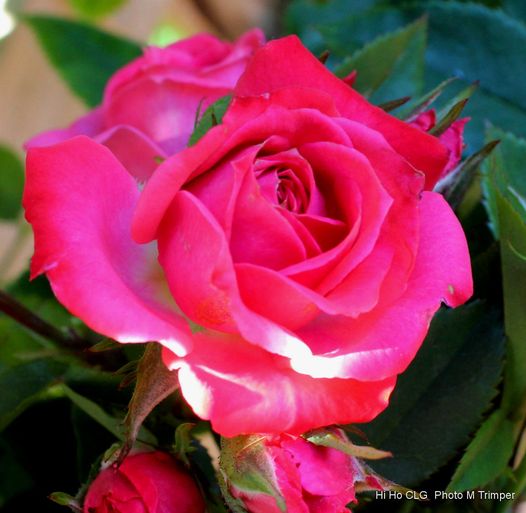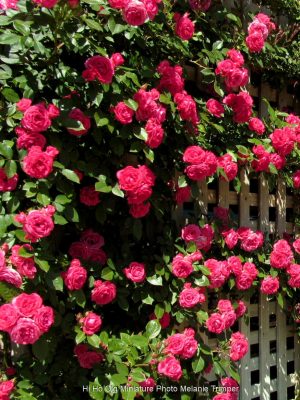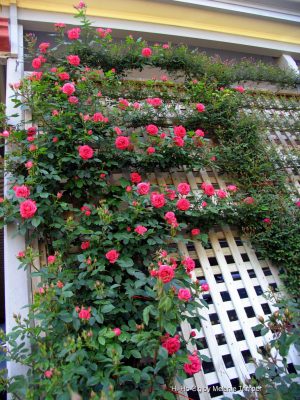
Gavin Woods, Rose Society of South Australia Immediate Past President and Life Member
Our thanks go to Gavin Woods, Rose Society of South Australia Immediate Past President and
Life Member, for these great tips to follow during September.
The experts assure us that a wetter than usual spring is still possible, however rainfall thus far
on the Yorke Peninsula has been disappointing. With days warming our roses have well and
truly sprung into growth and before we know it there will be flowers everywhere!
The red growth that roses tend to produce when coming out of dormancy adds colour to the
garden in its own right. Parrots seem to find this red growth irresistible, causing havoc for our
Hills growers. The only answer to this problem seems to be exclusion via the use of nets or covers, distracting from the beauty of the garden and adding another layer of complexity for growers.

Rose of the month ‘HI HO’ Climbing Miniature
Photo Credit: Melanie Trimper
The main chores for September include:
Watering: I have started. Warm days quickly deplete any reserves the soil may have. Do not let your roses want for water. Buds will be forming this month with water the vital ingredient.
Frequent deep watering is best.
Fertilising: if the Sudden Impact for Roses has not been applied, do it now. A fortnightly foliar feed will be of benefit to your plants. Try Strike Back for Orchids, roses (and orchids) love it!
Weeding: these are growing faster than the roses and are much easier to manage before they become established. A good mulch will do much to minimise establishment of weeds.
Nurturing new plants: with hand watering every second day. A dose of GOGO Juice once a month will help get them well established. To promote growth of the young plant pick
blooms as soon as they open.
Mulching: now is an ideal time to apply mulch as the plants are still quite small in growth.
Be careful that you do not knock off new shoots when spreading the mulch. Whoflungdung is
ideal as it contributes nutrition to the soil and is easily applied from the small bales. Fertilise
first, then apply the mulch.
Caring for pots: roses in pots long term require extra care with very frequent watering,
mulching and careful (not overhanded) fertilising.
The main pests and diseases of September are:
Aphids: will almost certainly make their presence felt at the end of the month. Predators
will come and control them IF you hold your nerve and allow nature to take its course.
Even the humble sparrow can be seen enjoying a feast of aphids. Thrips and spider mites are
more likely to relish the warmer days of October and are much more difficult to control (and
do much more damage) than aphids.
Black Spot: is often sighted on very early growth of susceptible varieties.
A well-timed systemic fungicide spray can be used. In smaller gardens,
removing the affected leaves and placing them in a plastic bag in the
garbage is a successful control method.

Photo Credit: Melanie Trimper

